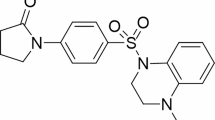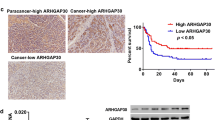Abstract
Pancreatic cancer is one of the most deadly diseases, with a very high metastasis and low survival rate. High levels of NRF2 have been detected in numerous malignancies, including head, neck, lung, and colon cancers, promoting the expansion and survival of cancer cells and chemical resistance to stressful conditions and affecting the response to treatment. To evaluate the possibility that modulation of NRF2 expression could be effective in treating pancreatic cancer cells, we explored the effect of knockdown of the NRF2 gene by NRF2-specific siRNA and its influence in combination with paclitaxel on pancreatic cancer cells. Miapaca-2 cell line, due to the high expression of the NRF2 gene, was selected for this study. Then, Miapaca-2 cells in different groups were treated with NRF2 siRNA and paclitaxel separately and in combination. After that, cell viability was measured by MTT assay and apoptosis induction by Annexin V-FITC/PI staining test. Cell cycle and autophagy were examined by flow cytometry, and cell migration was assessed by wound-healing assay. Finally, the expression of genes involved in apoptosis, Bax, Caspase-3, Caspase-9, and genes related to migration pathway, MMP-2, and MMP-9 in different groups were measured using qRT-PCR. Combined use of NRF2-specific siRNA with paclitaxel significantly reduced NRF2 gene expression in pancreatic cancer cells. NRF2 siRNA transfection significantly reduced cell viability. In addition, paclitaxel combination therapy with NRF2 siRNA strengthens the anti-tumor effects, such as inhibiting cell migration and provoking apoptosis, and autophagy and the cell cycle arrest in the G2 phase. NRF2 suppression augmented the expression of Bax, Caspase-3, and Caspase-9 genes and lowered the expression of Bcl-2, MMP-2, and MMP-9 genes, which play crucial roles in the pathways of apoptosis and cell migration, respectively. NRF2 siRNA enhances the susceptibility of Miapaca-2 cells to paclitaxel in pancreatic cancer cells. Thereby, suppressing NRF2 in combination with paclitaxel can be a new and efficacious treatment approach in treating pancreatic cancer.








Similar content being viewed by others
Data Availability
The data that support the findings of this study are available on request from the corresponding Author.
References
Bray, F., Ferlay, J., Soerjomataram, I., Siegel, R. L., Torre, L. A., & Jemal, A. (2018). Global cancer statistics 2018: GLOBOCAN estimates of incidence and mortality worldwide for 36 cancers in 185 countries. CA: a Cancer Journal for Clinicians, 68(6), 394–424.
Tonini, V., & Zanni, M. (2021). Pancreatic cancer in 2021: What you need to know to win. World Journal of Gastroenterology, 27(35), 5851.
Hu, J.-X., et al. (2021). Pancreatic cancer: A review of epidemiology, trend, and risk factors. World Journal of Gastroenterology, 27(27), 4298.
Goral, V. (2015). Pancreatic cancer: Pathogenesis and diagnosis. Asian Pacific Journal of Cancer Prevention, 16(14), 5619–5624.
Darmawan, G. & Simadibrata, M. (2011). Pancreatic cancer: Review of etiology, clinical features, diagnostic procedures, treatment and mesothelin role. Indonesian Association for the Study of the Liver.
Dai, S., Mo, Y., Wang, Y., Xiang, B., Liao, Q., Zhou, M., Li, X., Li, Y., Xiong, W., Li, G., Guo, C., & Zeng, Z. (2020). Chronic stress promotes cancer development. Frontiers in Oncology, 10, 1492.
Teymouri, A., Mohammadi‐Yeganeh, S., Bayat, S., Rezaee, D., Ghavidel, A. A., & Ghanbarian, H. (2020). Non-viral siRNA delivery systems for pancreatic cancer therapy. Authorea Preprints.
Singh, A., Trivedi, P., & Jain, N. K. (2018). Advances in siRNA delivery in cancer therapy. Artificial Cells, Nanomedicine, and Biotechnology, 46(2), 274–283.
Manda, G., Isvoranu, G., Comanescu, M. V., Manea, A., Butuner, B. D., & Korkmaz, K. S. (2015). The redox biology network in cancer pathophysiology and therapeutics. Redox Biology, 5, 347–357.
Moi, P., Chan, K., Asunis, I., Cao, A., & Kan, Y. W. (1994). Isolation of NF-E2-related factor 2 (Nrf2), a NF-E2-like basic leucine zipper transcriptional activator that binds to the tandem NF-E2/AP1 repeat of the beta-globin locus control region. Proceedings of the National Academy of Sciences USA, 91(21), 9926–9930.
Zhang, D. D., & Chapman, E. (2020). The role of natural products in revealing NRF2 function. Natural Product Reports, 37(6), 797–826.
Kobayashi, A., Kang, M. I., Okawa, H., Ohtsuji, M., Zenke, Y., Chiba, T., Igarashi, K., & Yamamoto, M. (2004). Oxidative stress sensor Keap1 functions as an adaptor for Cul3-based E3 ligase to regulate proteasomal degradation of Nrf2. Molecular and Cellular Biology, 24(16), 7130–7139.
Itoh, K., Wakabayashi, N., Katoh, Y., Ishii, T., Igarashi, K., Engel, J. D., & Yamamoto, M. (1999). Keap1 represses nuclear activation of antioxidant responsive elements by Nrf2 through binding to the amino-terminal Neh2 domain. Genes & Development, 13(1), 76–86.
Shelton, P., & Jaiswal, A. K. (2013). The transcription factor NF-E2-related factor 2 (Nrf2): A protooncogene? The FASEB Journal, 27(2), 414–423.
Lister, A., Nedjadi, T., Kitteringham, N. R., Campbell, F., Costello, E., Lloyd, B., Copple, I. M., Williams, S., Owen, A., Neoptolemos, J. P., Goldring, C. E., & Park, B. K. (2011). Nrf2 is overexpressed in pancreatic cancer: Implications for cell proliferation and therapy. Molecular Cancer, 10(1), 1–13.
Chio, I. I. C., Jafarnejad, S. M., Ponz-Sarvise, M., Park, Y., Rivera, K., Palm, W., Wilson, J., Sangar, V., Hao, Y., Öhlund, D., Wright, K., Filippini, D., Lee, E. J., Da Silva, B., Schoepfer, C., Wilkinson, J. E., Buscaglia, J. M., DeNicola, G. M., Tiriac, H., … Tuveson, D. A. (2016). NRF2 promotes tumor maintenance by modulating mRNA translation in pancreatic cancer. Cell, 166(4), 963–976.
Sharifi-Rad, J., Quispe, C., Patra, J. K., Singh, Y. D., Panda, M. K., Das, G., Adetunji, C. O., Michael, O. S., Sytar, O., Polito, L., Živković, J., Cruz-Martins, N., Klimek-Szczykutowicz, M., Ekiert, H., Choudhary, M. I., Ayatollahi, S. A., Tynybekov, B., Kobarfard, F., Muntean, A. C., … Calina, D. (2021). Paclitaxel: Application in modern oncology and nanomedicine-based cancer therapy. Oxidative Medicine and Cellular Longevity. https://doi.org/10.1155/2021/3687700
Igarashi, H., Ito, T., Hisano, T., Fujimori, N., Niina, Y., Yasuda, M., Kaku, T., Matsuo, S., Oono, T., Yoshinaga, M., Sakai, H., & Takayanagi, R. (2011). Paclitaxel-based chemotherapy for advanced pancreatic cancer after gemcitabine-based therapy failure: A case series of 5 patients. Case Reports in Oncology, 4(3), 534–541.
Horwitz, S. (1994). Taxol (paclitaxel): Mechanisms of action. Annals of Oncology: Official Journal of the European Society for Medical Oncology, 5, S3-6.
Miller, K. D., Siegel, R. L., Lin, C. C., Mariotto, A. B., Kramer, J. L., Rowland, J. H., Stein, K. D., Alteri, R., & Jemal, A. (2016). Cancer treatment and survivorship statistics. CA: A Cancer Journal for Clinicians, 66(4), 271–289.
Pereira, N. P., & Corrêa, J. R. (2018). Pancreatic cancer: Treatment approaches and trends. Journal of Cancer Metastasis and Treatment, 4, 30.
Hidalgo, M. (2010). Pancreatic cancer. New England Journal of Medicine, 362(17), 1605–1617.
Zimta, A. A., Cenariu, D., Irimie, A., Magdo, L., Nabavi, S. M., Atanasov, A. G., & Berindan-Neagoe, I. (2019). The role of Nrf2 activity in cancer development and progression. Cancers, 11(11), 1755.
Berberat, P. O., Dambrauskas, Z., Gulbinas, A., Giese, T., Giese, N., Künzli, B., Autschbach, F., Meuer, S., Büchler, M. W., & Friess, H. (2005). Inhibition of heme oxygenase-1 increases responsiveness of pancreatic cancer cells to anticancer treatment. Clinical Cancer Research, 11(10), 3790–3798.
Lee, Y. J., Kim, W. I., Bae, J. H., Cho, M. K., Lee, S. H., Nam, H. S., Choi, I. H., & Cho, S. W. (2020). Overexpression of Nrf2 promotes colon cancer progression via ERK and AKT signaling pathways. Annals of Surgical Treatment and Research, 98(4), 159.
Zhang, M., Zhang, C., Zhang, L., Yang, Q., Zhou, S., Wen, Q., & Wang, J. (2015). Nrf2 is a potential prognostic marker and promotes proliferation and invasion in human hepatocellular carcinoma. BMC Cancer, 15(1), 1–12.
Ma, J. Q., Tuersun, H., Jiao, S. J., Zheng, J. H., Xiao, J. B., & Hasim, A. (2015). Functional role of NRF2 in cervical carcinogenesis. PLoS ONE, 10(8), e0133876.
Esmaeili, M. A. (2016). Combination of siRNA-directed gene silencing with epigallocatechin-3-gallate (EGCG) reverses drug resistance in human breast cancer cells. Journal of Chemical Biology, 9(1), 41–52.
Pan, H., Wang, H., Zhu, L., Wang, X., Cong, Z., Sun, K., & Fan, Y. (2013). The involvement of Nrf2–ARE pathway in regulation of apoptosis in human glioblastoma cell U251. Neurological Research, 35(1), 71–78.
Lee, Y.-J., Lee, D. M., & Lee, S.-H. (2015). Nrf2 expression and apoptosis in quercetin-treated malignant mesothelioma cells. Molecules and Cells, 38(5), 416.
Lastra, D., Escoll, M., & Cuadrado, A. (2022). Transcription factor NRF2 participates in cell cycle progression at the level of G1/S and mitotic checkpoints. Antioxidants, 11(5), 946.
Choi, Y. H., & Yoo, Y. H. (2012). Taxol-induced growth arrest and apoptosis is associated with the upregulation of the Cdk inhibitor, p21WAF1/CIP1, in human breast cancer cells. Oncology Reports, 28(6), 2163–2169.
Li, X., Liang, M., Jiang, J., He, R., Wang, M., Guo, X., Shen, M., & Qin, R. (2018). Combined inhibition of autophagy and Nrf2 signaling augments bortezomib-induced apoptosis by increasing ROS production and ER stress in pancreatic cancer cells. International Journal of Biological Sciences, 14(10), 1291.
Zhang, L., Li, J., Ma, J., Chen, X., Chen, K., Jiang, Z., Zong, L., Yu, S., Li, X., Xu, Q., Lei, J., Duan, W., Li, W., Shan, T., Ma, Q., & Shen, X. (2016). The relevance of Nrf2 pathway and autophagy in pancreatic cancer cells upon stimulation of reactive oxygen species. Oxidative Medicine and Cellular Longevity. https://doi.org/10.1155/2016/3897250
Liu, J., Qin, X., Ma, W., Jia, S., Zhang, X., Yang, X., Pan, D., & Jin, F. (2021). Corilagin induces apoptosis and autophagy in NRF2-addicted U251 glioma cell line. Molecular Medicine Reports, 23(5), 1–10.
Zhang, C., Wang, H. J., Bao, Q. C., Wang, L., Guo, T. K., Chen, W. L., Xu, L. L., Zhou, H. S., Bian, J. L., Yang, Y. R., Sun, H. P., Xu, X. L., & You, Q. D. (2016). NRF2 promotes breast cancer cell proliferation and metastasis by increasing RhoA/ROCK pathway signal transduction. Oncotarget, 7(45), 73593.
Kumari, S., Badana, A. K., Mohan, G. M., ShailenderNaik, G., & Malla, R. (2017). Synergistic effects of coralyne and paclitaxel on cell migration and proliferation of breast cancer cells lines. Biomedicine & Pharmacotherapy, 91, 436–445.
Payandeh, Z., PirpourTazehkand, A., Mansoori, B., Khaze, V., Asadi, M., Baradaran, B., & Samadi, N. (2021). The impact of Nrf2 silencing on Nrf2-PD-L1 axis to overcome oxaliplatin resistance and migration in colon cancer cells. Avicenna Journal of Medical Biotechnology, 13(3), 116.
Zhang, X. Q., Yao, C., Bian, W. H., Chen, X., Xue, J. X., Zhu, Z. Y., Ying, Y., Xu, Y. L., & Wang, C. (2019). Effects of astragaloside IV on treatment of breast cancer cells execute possibly through regulation of Nrf2 via PI3K/AKT/mTOR signaling pathway. Food Science & Nutrition, 7(11), 3403–3413.
Kong, F., Zhang, R., Zhao, X., Zheng, G., Wang, Z., & Wang, P. (2017). Resveratrol raises in vitro anticancer effects of paclitaxel in NSCLC cell line A549 through COX-2 expression. The Korean Journal of Physiology & Pharmacology, 21(5), 465–474.
Acknowledgements
All the authors would like to thank the Immunology Research Center of Tabriz University of Medical Sciences for their kind support during this study.
Funding
No funding was received.
Author information
Authors and Affiliations
Corresponding authors
Ethics declarations
Conflict of interest
The authors declare that there is no conflict of interest.
Ethical Approval
The research protocol was approved by the Ethics Committee of Tabriz University of Medical Sciences, Iran (IR.TBZMED.VCR.REC.1400.329).
Additional information
Publisher's Note
Springer Nature remains neutral with regard to jurisdictional claims in published maps and institutional affiliations.
Rights and permissions
Springer Nature or its licensor (e.g. a society or other partner) holds exclusive rights to this article under a publishing agreement with the author(s) or other rightsholder(s); author self-archiving of the accepted manuscript version of this article is solely governed by the terms of such publishing agreement and applicable law.
About this article
Cite this article
Riazi-Tabrizi, N., Khalaj-Kondori, M., Safaei, S. et al. NRF2 Suppression Enhances the Susceptibility of Pancreatic Cancer Cells, Miapaca-2 to Paclitaxel. Mol Biotechnol (2023). https://doi.org/10.1007/s12033-023-00872-2
Received:
Accepted:
Published:
DOI: https://doi.org/10.1007/s12033-023-00872-2




